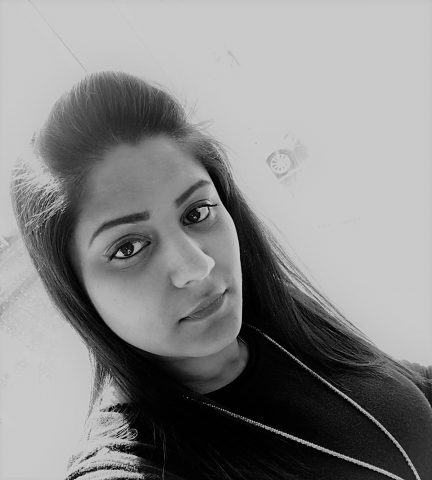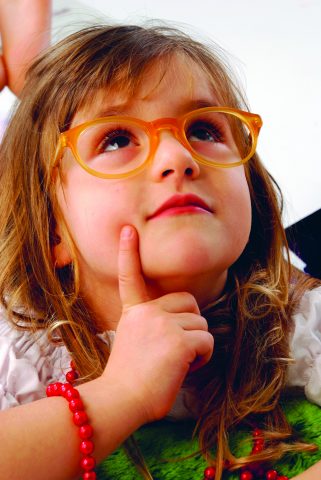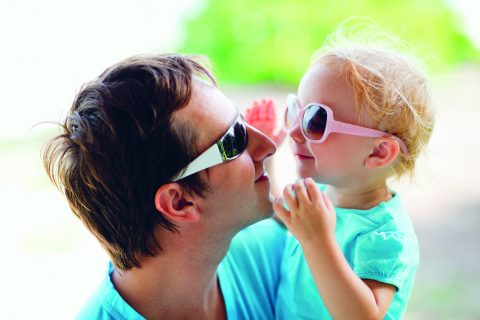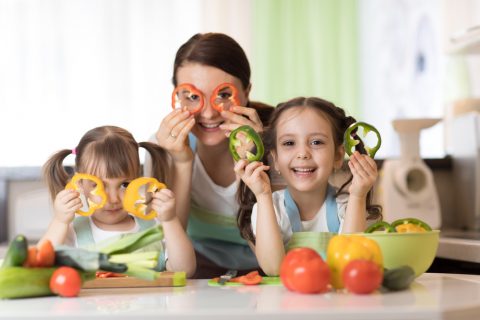The Importance of Children’s Eye Health


 by Nazmeen Ahmed, optometrist at A.J.Spurrett Opticians, Blackburn
by Nazmeen Ahmed, optometrist at A.J.Spurrett Opticians, Blackburn
Reminiscing back to my early days of parenting, becoming a proud mother to my now nine-year-old daughter – undoubtedly my greatest achievement, I very clearly recall the life-changing moment she entered the world. That amazing feeling when you become hopelessly in love with a little human who has complete control over you.
The struggle in the early days, the sleep deprivation, and a baby with colic is most definitely outweighed by the fond memories of key milestones in my girl’s life: first crawl, first steps, first tooth, and the list could go on….and on.
As an optometrist, I also firmly remember the first time I examined her eyes at barely a few months age. My friends and family were intrigued as to how it was possible to do an eye examination at such a young age, some were also confused saying “but she can’t read yet”. This general reluctance, or just through lack of information, of parents to take their children for regular visits to the local optician is revealed in the frightening statistic that 1 in 5 school-aged children have an undiagnosed vision problem.
Why are there mixed feelings about taking youngsters for eye examinations? One theory which I came across and strongly agree with is that the emphasis on eye health is clearly absent in the Personal Child Health Record (or the Red Book as almost all parents refer to it). There is no reference to ‘optician’ or ‘optometrist’ in this wonderful 100-page book, which covers percentiles of your baby’s weight in great detail. Yet when it comes to teeth, parents are advised in the red book to see a dentist for advice as soon as you have a baby.
Similarly, we focus on measuring their feet and getting the first walking shoes correct, but it seems that detection of eye problems relies on the observant parent in the early years or through the eye check promised during the first year at school.
Are eye tests important for children?
Children may not realise they have a vision problem, so without routine tests there is a risk that any problems could go undiagnosed for months or years. Children’s eyes differ from those of adults in a number of ways. A child’s immature visual system is more prone to irreversible damage therefore it is important to have your child regularly assessed from a young age. This is so that conditions such as amblyopia (lazy eye), strabismus (squint), and uncorrected refractive error i.e. myopia (short sightedness), hyperopia (long sightedness), and colour deficiency, to name a few can be detected early.

The critical period for a child’s visual development
A child’s visual system develops over the first few years of life. Around the age of 7-8 their visual system is similar to that of an adult so any manipulation to the visual state needs to occur before this period.
Children can have an eye test at any age. They don’t have to be able to read to have their eyes examined. It is possible to tell whether a child has a squint or needs glasses without asking a single question using age-appropriate tests and equipment. It’s like magic!
It is recommended that an optometrist sees them before they start school and start learning to read, around the age of three or sooner if you are concerned. Detecting problems early on offers the greatest opportunity to ease normal visual development. So, with this in mind, surely a comprehensive eye examination with an optometrist is a sensible approach to take, to manage any symptoms and to help prepare our little cherubs for whatever life has to throw their way in the coming years.
Is vision screening at school adequate?
Some children have a basic vision test when they start school. It is, however, basic and is only designed to pick up if a child has reduced vision – not, as some parents may think, to detect the reason behind the reduced vision. This service sadly no longer takes place in every primary school and is usually not carried out by an eye care professional. So, for a full eye test you should take your child to a registered optometrist.
What are the tell-tale signs of poor sight in a child?
It is often difficult to tell if your child is having problems with their eyes, some children are more vocal than others and can pinpoint things you didn’t realise they knew about, whilst other children will not say a peep about anything. But, as a parent myself, I know that we are very good at detecting if something is even slightly different.
Some signs that indicate there could be something wrong include:
-
Struggling to recognise colours and shapes
-
Frequently bumping into things or having problems with coordination
-
Not showing any interest in learning to read
-
Not progressing or being disengaged at school
-
Complaining of headaches regularly – most headaches don’t have an ocular cause, but some children may have a visual problem causing headaches
-
Sitting very close to the TV or holding books or objects close to their face
You may also recognise some physical signs:
-
Rubbing eyes frequently (other than when tired as this is very normal)
-
Squinting, head-tilting or closing one eye when trying to focus
-
One eye turning in or out (this may be easier to spot when your child is tired)
-
Blinking excessively
If you spot any of these symptoms you should arrange for your child to have a sight test. Simple treatments like wearing glasses or wearing a patch for a while could be all that your child needs. The earlier that eye problems are picked up, the better the outcome will be.
What is Retinoblastoma?
If flash photographs of your child show a white colour in their pupil, or red eye only in one eye not both, when they are looking straight at the camera, you should ask your optometrist for more information. These could be signs of a very rare but very serious condition known as Retinoblastoma.
Retinoblastoma is a rare form of eye cancer which generally affects children under five-years-old. Symptoms include a turn in the eye which was not present before. The condition is treatable but if signs are noticed the child must be checked out as soon as possible.
How much does a children’s eye test cost?
All children under 16 and those under 19 and in full time education qualify for a free NHS funded sight test. Given that they are readily accessible and something that I have found most children, including my own, find to be a fascinating experience, it is remarkable that in the UK less than 25% of under-16s have ever had a sight test!
How much do children’s glasses cost?
If your child needs glasses, the NHS will give you an optical voucher which will cover the cost of standard glasses, or alternatively you can put the voucher towards the cost of any other pair of glasses if you prefer. You can take the voucher to any dispensing optician (a person who sells prescription glasses).
What is included in a children’s eye test?
We know that an eye test can be a little overwhelming for some children, especially if it’s their first ever eye test. That is why the whole process is made as welcoming, fun and child friendly as possible.
Children’s eye tests are different from those of adults. We use specially designed charts to check your child’s vision that allow your child to recognise shapes or pictures or even match letters. Even though some of the equipment used is different, it doesn’t mean that your child’s eye test is any less accurate than an adult’s. In fact, great care is taken to ensure that it isn’t.
As well as doing the relevant health checks of the eyes, we optometrists also evaluate the muscles and associated structures to ensure they are healthy too. Particular attention is given to investigating squints and ‘lazy eyes’.
Other tests include:
-
Pupil reflex test
-
Attention to visual objects
-
Range of movement tests
-
Refraction – to determine if your child needs glasses and if so what prescription. Sometimes your child may be given special eye drops that widen their pupils and allow the back of their eyes to be examined more clearly. These drops have the effect of stopping the eyes from focussing so a more accurate prescription can be found using an instrument called a retinoscope
-
Colour vision deficiency test
-
Stereoscopic (3D) vision testing

Top Tips on Keeping Children’s Eyes Healthy
-
GET TESTED – Having regular eye tests are essential to ensure your child’s eyes stay healthy. We recommend at least once a year (unless you are advised otherwise by your optometrist)
-
EAT A RAINBOW – Eating a rainbow of colourful fruit and vegetables helps to ensure young eyes get the nutrients they need to grow healthy
-
COVER UP – It is very important to protect young eyes from the sun. When you are young the lens at the front of the eye is really clear so it can let even more damaging sunlight in. Protect your child’s eyes with UV blocking sunglasses. A hat with a wide brim can also help protect against damaging UV
-
GO OUTDOORS – This is one of my favourites. Research shows that spending time playing outdoors can be beneficial in healing to prevent the onset of progression of myopia (short sightedness). So, make sure they get out, which is hard in this day and age when tablets and phones are all the rave, but cast your mind back to your childhood when all you did was ‘play out’ and how it was the best time of your life!

Top tips on looking after glasses
If your child has been prescribed glasses it is important that they wear and care for them properly to ensure their eyes stay healthy.
-
Clean glasses daily for clearer vision
-
Keep glasses in their case when they are not being worn
-
Don’t put glasses ‘lens down’ on surfaces as this will lead to the lenses scratching
-
Always teach your child to take glasses off with both hands to stop them going out of shape
Encouraging good habits from the start will ensure your child’s glasses will last as long as possible.
Here at Valli Opticians we believe that optometry is an important resource for all children. We want to ensure that all practices are equipped to deliver eye care for young children, and we encourage parents to take their children for sight tests from an early age, building good eye health habits into adulthood.
Many thanks for reading.